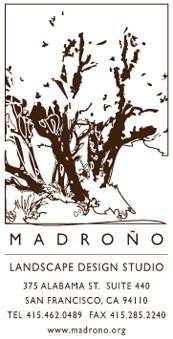 At the confluence of Redwood Creek and San Francisco Bay in southern San Mateo county, three islands shape-shift in drifting piles of river silt and sea salt. Boundaries may blur, but Smith and Corkscrew Sloughs divide this trio clearly into Inner, Middle, and Outer Bair Island -- the first a popular Redwood City jogging and dog-walking spot connected to the mainland at Whipple Ave., the latter two accessible by kayak. These sandbanks and mudflats have undulated over eons in a long, slow waltz between sedimentation from the river and erosion from the tides, creation and destruction inseparable.
At the confluence of Redwood Creek and San Francisco Bay in southern San Mateo county, three islands shape-shift in drifting piles of river silt and sea salt. Boundaries may blur, but Smith and Corkscrew Sloughs divide this trio clearly into Inner, Middle, and Outer Bair Island -- the first a popular Redwood City jogging and dog-walking spot connected to the mainland at Whipple Ave., the latter two accessible by kayak. These sandbanks and mudflats have undulated over eons in a long, slow waltz between sedimentation from the river and erosion from the tides, creation and destruction inseparable.
Here at the corner of ocean and land, the air hangs with the sharp aroma of salt and the healthy reek of decay and erumpent life. High tide deepens the channels between the raised flats; low tide reveals tangles of pickleweed connecting them. On higher ground, yellow blossoms of gumplant wave in the breeze, and pink rosemary blooms of alkali heath hug the ground -- a contrast to the stark rectangles of vivid red, orange, and white at the adjacent industrial salt ponds.
Tidal marshes in the San Francisco Bay provide critical habitat for a vast array of species including young salmon and steelhead adjusting to life in saltwater, harbor seals hauling out on the marshes to breed and whelp, shorebirds like snowy plovers, shovelers, avocets and black-neck stilts prowling the mudflats for mollusks, and endemic endangered birds and mammals like the California clapper rail and the salt marsh harvest mouse who live only in the tidelands of the Bay.
The salty smell of the marsh evokes ancient origins. Just as the first creatures arose from the primordial sea, modern-day mothers bring forth babies drenched in pregnancy's brine. The theme has expressed itself in human mythology from at least the time of Babylon, when Marduk (the god of storm) established lordship over the other deities by killing the chaotic Tiamat (saltwater) and creating the world out of Tiamat's body. This cleft between dry land and deep sea is the mother of us all.

